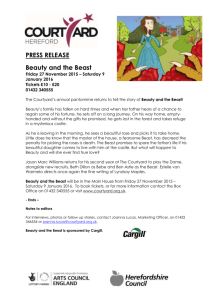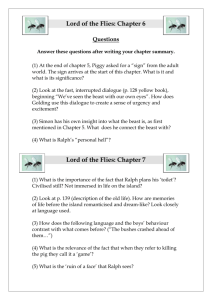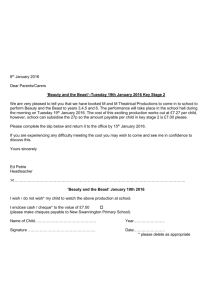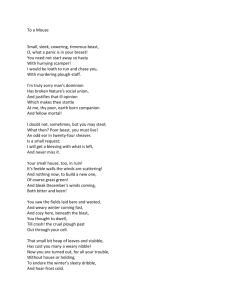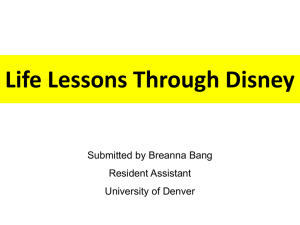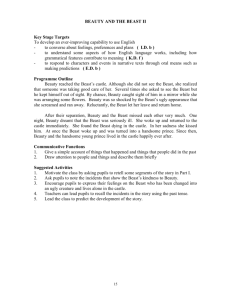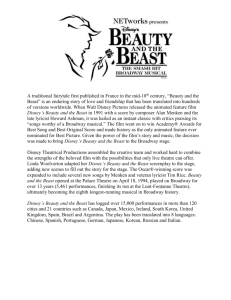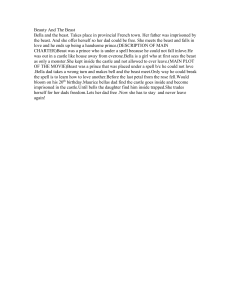Translation in Fairy-Tales
advertisement
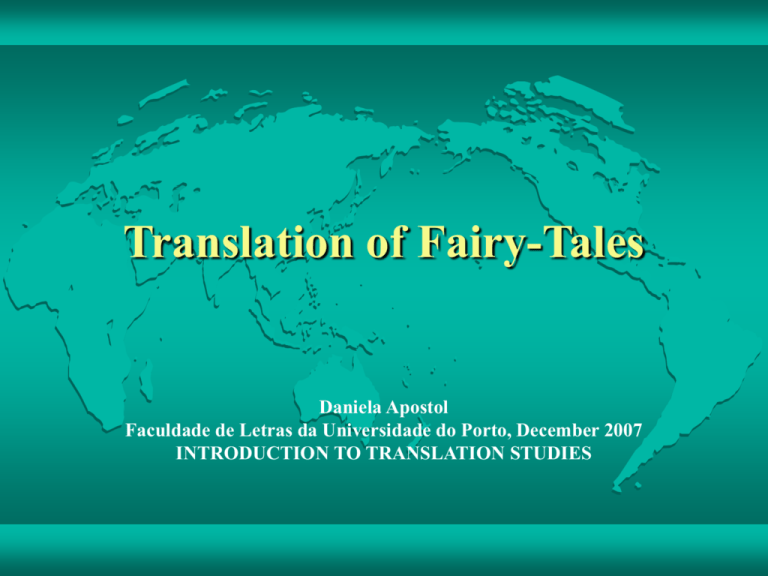
Translation of Fairy-Tales Daniela Apostol Faculdade de Letras da Universidade do Porto, December 2007 INTRODUCTION TO TRANSLATION STUDIES History of the genre: “ Amor and Psyche” is considered to be one of the first literary fairy-tales. It is a story inserted in Lucius Apuleius’novel “The Golden Ass”. Originally, adults were the audience of a fairy-tale just as often as children. In the 19th and 20th centuries, the fairy-tale came up to be associated with children’s literature. “Beauty and the Beast” It is one of the best known stories of the world. The first version of the tale appeared in 1740 by Madame Gabrielle de Vielleneuve, but her audience were not children. The next version is that of Madame Le Prince de Beaumont, the best well-known one and most used for further translations. The story appears in many other cultures in different forms, so as there are 179 tales with similar themes. These different translations are adapted to the target language and culture. Interlingual translation of the tale English: “Beauty and the Beast” French: “La Belle et la Bête” German: “Die Schöne und das Biest “ Portuguese : “A Bela e o Monstro” / “ A Bela e a Fera ” Romanian : “Frumoasa si Bestia” Spanish : “La Bella y la Bestia” Beginning formulae: English : ” There was once a very rich merchant…” French : “Il y avait une fois un merchand qui était extrêmement rich…” Portuguese: “Era uma vez un mercador muitissimo rico…” “A fost odata ca niciodata un negustor bogat…” These are specific formulae which place the story in an unknown place and time. Different meanings of the term “Beast” While in English and French “beast” /” “bête” defines even an animal or a person who behaves badly, the Romanian “bestie” emphasizes the idea of a crual or immoral person. When someone is told “bestie”, one understands that person has a terrific character, he is very dangerous. In the story, the beast is seen more as an ugly and stupid creature and less as a crual one. In the English version: “beast”- refers to the main character, which is an ugly being “beast”-is used with reference to the horse “poor beast” While in French, a third connotation appears: “Vous avez raison, dit le monstre, mais outre que je suis laid, je n’ai point d’esprit : je sais bien que je ne suis qu’une bête. ” * -* ignorant person Free / “sense -for -sense” translation English: “The two eldest had a great deal of pride, because they were rich. They gave themselves ridiculous airs, and would not visit other merchants’ daughters, nor keep company with any but persons of quality.” French: “Les deux aînées avaient beaucoup d’orgueil, parce qu’elles étaient riches: elle faissaient les dames, et ne voulaient pas recevoir les visites des autres filles de marchands; il leur fallait des gens de qualité pour leur companie.” Portuguese: “As otras eram muito orgulhosas porque eram muito ricas: armavam-se em grandes senhoras e não queriam receber visitas das filhas dos otros mercadores.” Other examples: The Beauty is seen as: “more beautiful than ever” “plus belle que le jour” “mais bela do que o sol” The prince after his transformation is : “one of the loveliest princes that eye ever beheld” “un price plus beau que l’amour” “um principe mais belo que o amor As one can see, each story is adapted to the target culture. Specific similes The Romanian version It is an adaptation, the tale respects the main idea, but a lot of events are omitted. In the story appears a goblin, which in other versions is absent. Also, the text is adapted to the Romanian fairy-tale, “basm”, which basically contains many archaic and regional words or expressions. The language is not an academic one, a foreigner would not understand without any explanation. Examples: “ a ajuns sarac lipit pamantului” Free translation: he is now very poor Literal translation: “he became poor stuck on the earth” “necajit” / “amarat” are synonyms for “suparat”-”upset” “a trebalui”- archaic form of the verb “ a munci”- “to work” Intersemiotic translation of “Beauty and the Beast” The tale has been notably adapted for both stage and screen several times. The best known version is the Walt Disney production. A French version of La Belle et la Bête was made in 1946, directed by Jean Cocteau, starring Jean Marais as the Beast and Josette Day as Beauty. Illustrations. Bibliography: http://www.lumeapiticilor.ro/?aid=92&caption=Frumoasa _si_Bestia http://cours.cegep-st-jerome.qc.ca/530-gjb-p.l/labelle.htm http://www.pitt.edu/~dash/beauty.html http://en.wikipedia.org/wiki/Beauty_and_the_beast http://www.surlalunefairytales.com/beautybeast/index.ht ml http://en.wikipedia.org/wiki/Fairy-tale http://br.youtube.com/watch?v=H8WRMKxmKK8&feature=related
